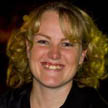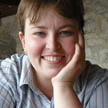I’m a Scientist is like school science lessons meet the X Factor! School students choose which scientist gets a prize of $1000 to communicate their work.
Scientists and students talk on this website. They both break down barriers, have fun and learn. But only the students get to vote.
This zone is the Disease Zone. It has scientists studying the causes and processes of illness . Who gets the prize? YOU decide!









Pathology very braodly can be defined as the study and diagnosis of disease. In real life it is divided into seperate departments, with most scientists and Pathologists (who are medical doctors that have done specialiast training) choosing to specialise in one are. The areas are:
HAEMATOLOGY – the study of blood and blood cells. In haem we look at blood counts, and how many red blood cells, white blood cells and platelets are present. Any abnormalities can lead to a diagnosis of things like anaemia, infections or leukaemias or lymphomas. Haematology also looks at the coagulation factors in the blood to make sure peoples blood clots correctly, or to measure the levels for certain drugs like Warfarin that can cause bleeding.
BIOCHEMISTRY – the study of the chemical components of the body. Different levels of chemicals like electrlytes (eg sodium), glucose, cholesterol, liver enzymes, hormones can all be measure from blood and other body fluids. We can do measurements in our lab of pretty much any fluid that comes from the body…
MICROBIOLOGY/SEROLOGY – the study of bacteria, viruses, parasites and fungi and the diagnosis of their infections. Where possible in microbiology testing is done to work out the best treatment for the microbe causing the infection as well. Serology refers to testing the serum of a patient for antibodies to see if they have been exposed to an illness in the past
HISTOPATHOLOGY – The examination of tissue samples, both as gross (ie chunks!) and microscopic samples (under a microscope) for signs of disease. Its this department that gets sent any bits of tissue that get cut out when a biopsy gets done. They are cut into very thin slices and stained with special stains and examined under a microscope fir signs of disease.
TRANSFUSION – doing blood groups and checking for antibodies against other blood groups so you can safely match blood from the red cross for transfusions. Other things that can be transfused are platelets, plasma and special products made by the red cross like Anti-D (which is given to some pregnant ladies)
These are the main departments in a pathology company – not every lab will have every department. For example, my lab is in the country, so we have haematology, transfusion, biochemistry and basic microbiology (we can only do a little bit of bacteria stuff). Anything more complicated from my lab is sent on the plane to our main lab in the city.
I hope my explaination makes sense!!
0